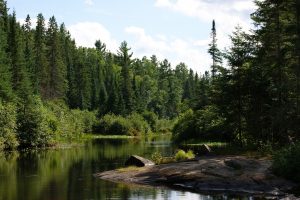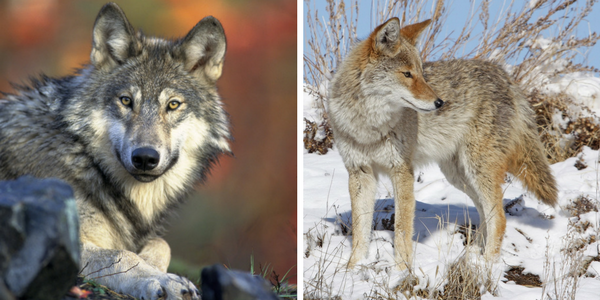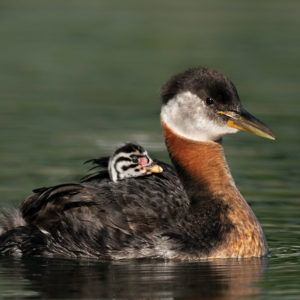Discover the unique Algonquin Wolf

Amanda Simard, Writing Intern
This blog was written by writing intern Amanda Simard.
This month’s calendar photo shows a young Algonquin Wolf spotted in Algonquin Park, ON. Here are some facts about this wolf you may not have known!

Algonquin Provincial Park
Algonquin Wolf Description
- Common name: Algonquin Wolf
- Scientific name: Canis sp.
- Habitat: deciduous and mixed forests, south of the Boreal Forest Region. Found in Quebec and Ontario
- Size: average weight: females – 24 kg; males – 29 kg
- Description: a medium-sized canid with fur that is often reddish-brown, though colouring varies greatly. It appearance bears similarities to the Grey Wolf and the Coyote.
What’s in a name?
Until recently, the Algonquin Wolf was known as the Eastern Wolf. It is still listed as Eastern Wolf by the Committee on the Status of Endangered Wildlife in Canada (COSEWIC) as of their assessment in 2015. However, the Committee on the Status of Species at Risk in Ontario (COSSARO) has since concluded that the Algonquin Wolf is genetically distinct from the Eastern Wolf.
Cross breeding
The Algonquin Wolf is a subspecies resulting from a long history of hybridization among the various canids who inhabit the region. It is a cross between the Eastern Wolf, the Grey Wolf and the Coyote. As a result, its size is slightly larger than a Coyote but smaller than a Grey Wolf. To be properly identified, genetic testing is often necessary because it may look very similar to these other canids.

Left to right: Image of a Grey Wolf and image a Coyote
Population size
The population is estimated to be fewer than 500 mature individuals and they live primarily in Algonquin Park. Outside this protected area, the biggest threat to the Algonquin Wolf is hunting and trapping. It is also vulnerable to road-related mortalities and habit loss from encroaching housing developments.
Currently, the Algonquin Wolf is listed under “Threatened” according to the 2015 COSEWIC assessment and has “Special Concern” status under the Species at Risk Act (SARA). “Threatened” means the species is not endangered at present but is likely to become so without preventative actions.
What you can do
- Report a sighting. The Ministry of Natural Resources and Forestry tracks species at risk. The data collected from citizen sightings helps inform conservation action.
- You can also help through your continued support of Nature Canada’s many habitat conservation efforts.
Acknowledgements: COSEWIC and Species at risk in Ontario



